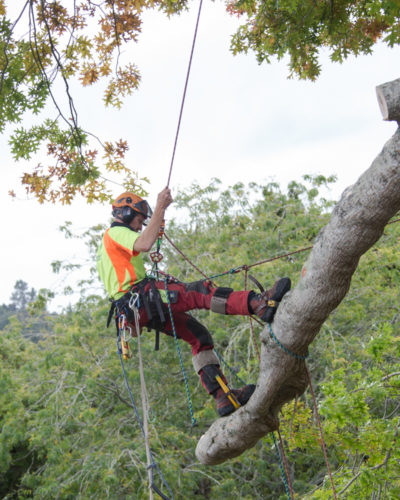Tree Trimming in Northland

Trimming trees and paring back large boughs might seem simple enough, but there are a huge amount of factors to consider. If the tree’s limb is heavy and gnarled, its removal would be much more complicated. We’ve put together a few ideas to improve the health and maintenance of your trees.
Those heavy and twisted boughs seem haunted and beautiful in the twilight, but one storm can leave a truly dangerous mark on the tree and its surrounding area. Before you even get to that point, Arboraid can trim those back in no time. We mainly use crown pruning and thinning to select and remove potentially weak areas of the tree. While crowning carefully cuts away the problematic areas of the tree, while thinning keeps the body and foliage intact around the tree.
Since each tree is different, our arborists assess each tree for a variety of factors, including its surroundings. Since a tree is a living organism that contributes to its environment, we consider the impact a tree will have on its surroundings.
The next step is to identify the way your tree is naturally dealing with decay. We identify a tree’s natural pruning point by Compartmentalization of Decay in Trees, also called CODIT, which outlines the ways that trees naturally deal with decay. Our specialists look to trim trees along points that encourage rapid wound healing and phytochemical inoculation.
ArborAid specialists also consider how the tree’s regrowth will impact the rest of the tree. We prune in a way that spreads the weight along the tree to minimise the stress. This distribution technique is known as an Axiom of Uniform Stress, or AOUS.
While it may look like just a pile of bark chips, our pruning is in fact the result of careful consideration and planning specific to your tree. When we know what outcome you’d like, our specialists can trim those trees for a lasting result.
We use a variety of techniques at ArborAid, the most commonly used ones are outlined below:
- Windowing: trims away at particular parts of the tree, which is faster and cheaper. It’s an easy method that exposes different parts of the foliage that allow for stable regrowth.
- Dead Wooding: reduces the risk of branches falling and is a great way to prepare against severe weather. Dead wooding increases the tree’s resilience against infestations from insects and fungus.
- Crown Lifting: this technique is commonly used in suburban areas and has minimal impact on the trees. Crown lifting cuts away at the lower branches, which allows light through the canopy to lower lying plants. The light also prevents waterlogging on the ground and allows greater clearance for vehicles.
- Crown Thinning: thinning helps to prevent canker diseases and rubbing issues in your tree. We ensure to remove no more than 25% of the tree’s foliage, which offers a subtle opening in the canopy. Since removing too many branches does more harm than good, we stagger the heights at which branches are removed.
- Crown Reduction: this particular technique gradually works alongside other pruning techniques to reduce the shape and size of your tree. Reduction is an aesthetic move that improves the healthy growth of your tree.
- Directional Pruning: Arborists are most commonly asked to do this in utility areas with powerlines, roads, buildings and structures that trees would otherwise obstruct. Although trimming has a blunter effect, it offers a more practical support.
- Topping: Although it might be a quick fix to get that evening view with your cup of tea, topping should only be used in consultation with an expert on younger trees. Incorrectly topping trees can actually be quite damaging in the long term in most cases.


